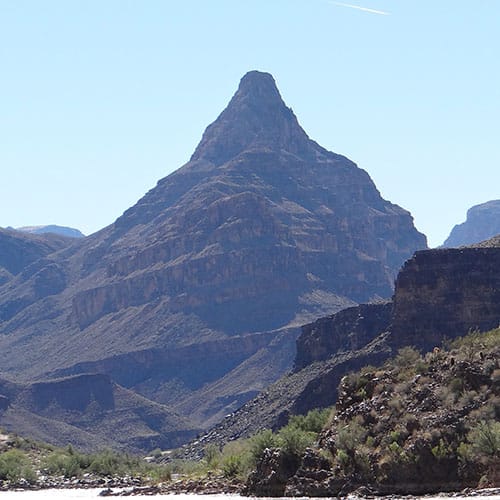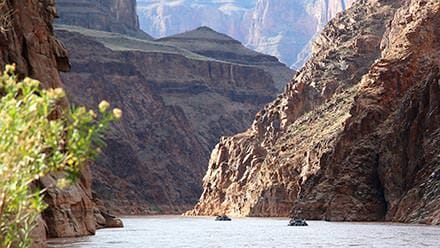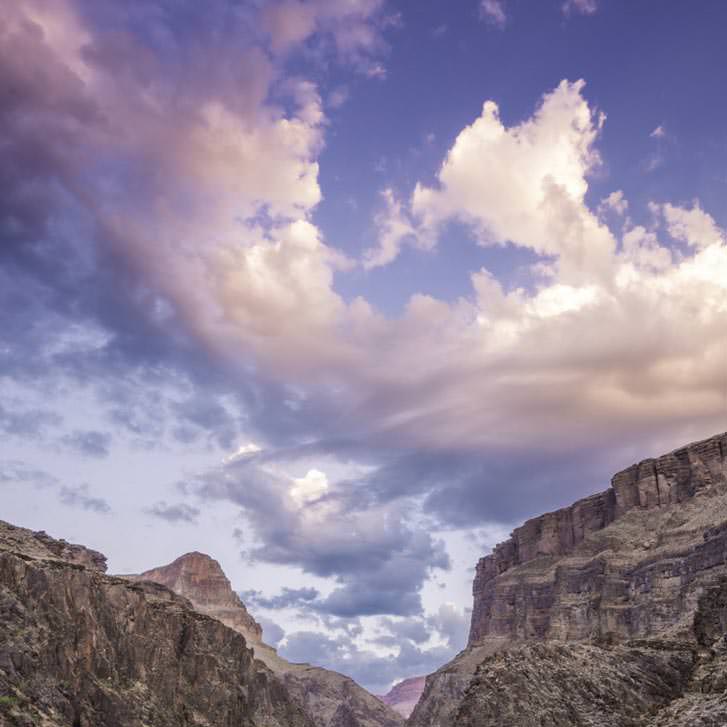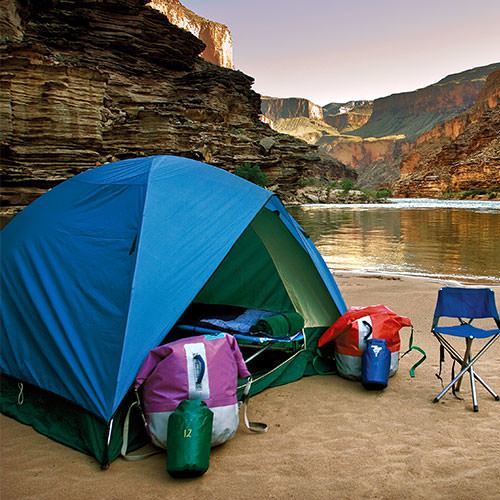Flash Flooding »
The Diamond Creek road beginning in Peach Springs, Arizona is the first place a vehicle can access the canyon at river level since Lee’s Ferry at mile 0. River trips often choose to end here, and some river trips begin here running the last 50 miles of Grand Canyon and most of the Lower Gorge. During summer monsoons, Diamond Creek often floods washing away portions of the road. In 1984, a big flood washed two separate trucks, both loaded with an entire river trip’s worth of gear, into the river and Diamond Creek Rapid. Most fortunately, moments before the flood arrived, everyone who had been riding in the trucks escaped to high ground.













